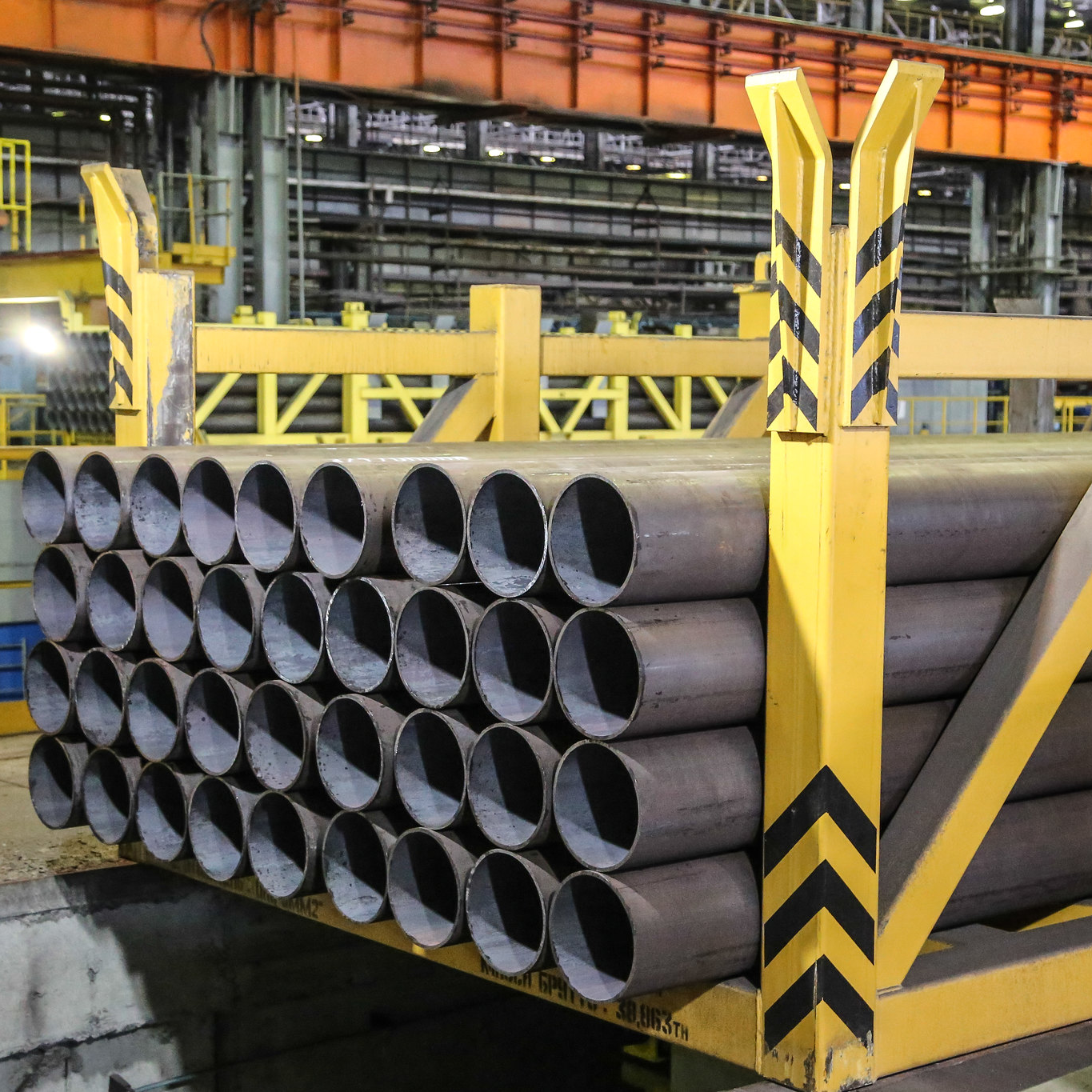ASTM A333 Steel Pipe for Low-Temperature Service
- Grade: 1, 3, 6, 8, 11
- Seamless:OD: 21.3-1067mm WT: 2-150mm L:5.8m/6m/11.8m/12m
- Welded:OD: 21.3-1422mm WT: 3.2-60mm L:5.8m/6m/11.8m/12m
- ASTM A333 Grade 1 Impact Test Temperature: -50°F (-45°C)
- ASTM A333 Grade 3 Impact Test Temperature: -150°F (-101°C)
- ASTM A333 Grade 6 Impact Test Temperature: -50°F (-45°C)
ASTM A333 Steel Pipe for Low-Temperature Service
The ASTM A333 Low-Temperature Resistant Pipe is a high-performance pipe designed to withstand extremely low temperatures, down to -196°C (-320°F). It is manufactured according to the ASTM A333 standard and features excellent low-temperature resistance, high-strength, and corrosion resistance. The pipe is suitable for use in various applications, including LNG terminals and pipelines, cryogenic storage facilities, low-temperature chemical processing, oil and gas production and transportation, and industrial processes that require exposure to sub-zero temperatures.
Chemical Composition of ASTM A333 LTCS PIPE
| Element | Grade 1 | Grade 3 | Grade 6 | Grade 8 | Grade 11 |
| C (max) | 0.3 | 0.19 | 0.3 | 0.13 | 0.10 |
| Mn | 0.40–1.06 | 0.31–0.64 | 0.29–1.06 | 0.90 max | 0.60 max |
| P (max) | 0.025 | 0.025 | 0.025 | 0.025 | 0.025 |
| S (max) | 0.025 | 0.025 | 0.025 | 0.025 | 0.025 |
| Si | … | 0.18–0.37 | 0.10 min | 0.13–0.32 | 0.35 max |
| Ni | … | 3.18–3.82 | 0.40 max | 8.40–9.60 | 35.0–37.0 |
| Cr | … | … | 0.30 max | … | 0.50 max |
| Cu | … | … | 0.40 max | … | … |
| Al | … | … | … | … | … |
| V (max) | … | … | 0.08 | … | … |
| Cb (max) | … | … | 0.02 | … | … |
| Mo (max) | … | … | 0.12 | … | 0.50 max |
| Co | … | … | … | … | 0.50 max |
Specifications
| Standard | ASTM A333 Seamless and Welded Steel Pipe for Low-Temperature Service |
| Steel Grade/Material | Grade 1, Grade 3, Grade 6, Grade 8, Grade 11 |
| Seamless Pipe Size | OD: 21.3-1067mm WT: 2-150mm L:5.8m/6m/11.8m/12m |
| Welded Pipe Size | OD: 21.3-1422mm WT: 3.2-60mm L:5.8m/6m/11.8m/12m |
| Length | 5.8-16m or OEM |
| End design | 1) Bevel the welding ends to an angle of 30°, +5°, -0°, with a root face of 1/16″, +/- 1/32″. The bevel shall form a V groove with an included angle of 60°+10/-0. The root opening shall be 1/16″, +/- 1/32″ according to ANSI B16.25. 2) Plain or straight ends. 3) Threaded ends with coupling or without coupling according to API Spec. 5B. |
| Packing | Black painted or bare surface, hexagonal bundled with steel strips if the pipe diameter=323.9mm, loose packing if the pipe diameter is larger than 323.9mm. |
| Protective Coatings & Linings | 3LPE, 3LPP, FBE, AkzoNobel, HEMPEL, JOTUN, Epoxy Zinc-rich Primer, Liquid Epoxy Resin, etc |
| Section Shape | Round |
| Technique | Seamless Hot Rolled, LSAW, HFW, JCOE, RBE, UOE |
| Place of Origin | Made in China |
| MOQ | 25 tons/size |
| Transportation | Land transportation by truck or train, sea transportation by container ship or bulk ship. |
Applications of ASTM A333 Steel Pipe for Low-Temperature Service
ASTM A333 steel pipe is specifically designed for low-temperature service, where materials must withstand low temperatures without compromising their structural integrity. Here are the primary applications of ASTM A333 steel pipe:
Oil and Gas Industry
Low-Temperature Transmission Lines: Used for transporting oil and gas in regions with cold climates, ensuring that the pipelines do not become brittle and fail.
LNG Plants: Employed in the construction of pipelines for Liquefied Natural Gas (LNG) plants, which operate at cryogenic temperatures.
Gas Processing Plants: Utilized in gas processing facilities where low-temperature processing is required.
Petrochemical Industry
Cryogenic Applications: Suitable for cryogenic applications in petrochemical plants where materials are exposed to extremely low temperatures.
Chemical Transport: Used for transporting chemicals that must be maintained at low temperatures to prevent reactions or maintain stability.
Power Generation
Low-Temperature Steam Lines: Used in power plants for low-temperature steam lines and condensate return lines where maintaining structural integrity at low temperatures is crucial.
Cooling Systems: Employed in cooling systems where fluids must be transported at low temperatures.
Refineries
Low-Temperature Processing Units: Utilized in refinery units where low-temperature processing of hydrocarbons is required.
Cold Weather Operations: Suitable for operations in cold weather regions, ensuring reliable performance and safety.
Chemical Industry
Refrigeration Systems: Used in industrial refrigeration systems where pipes must withstand low temperatures without losing strength.
Chemical Processing: Employed in chemical processing plants for low-temperature applications, ensuring safe and efficient transport of chemicals.
Cryogenic Applications
Storage Tanks: Used in the construction of cryogenic storage tanks and associated piping systems for storing liquefied gases such as oxygen, nitrogen, and argon.
Cryogenic Equipment: Employed in various types of cryogenic equipment that require robust and reliable piping solutions.
LNG and CNG Transport
LNG Pipelines: Suitable for LNG pipelines that transport liquefied natural gas at cryogenic temperatures.
CNG Filling Stations: Used in Compressed Natural Gas (CNG) filling stations where low-temperature pipes are necessary.
Infrastructure Projects
Cold Climate Infrastructure: Used in infrastructure projects in regions with extremely cold climates, ensuring that pipelines remain functional and safe.
Municipal Water Systems: Employed in municipal water systems in cold regions where pipes are exposed to low ambient temperatures.
Industrial Applications
Process Piping: Utilized in various industrial processes requiring the transportation of fluids at low temperatures.
Cooling Systems: Suitable for cooling systems in industrial plants where maintaining low temperatures is critical.




